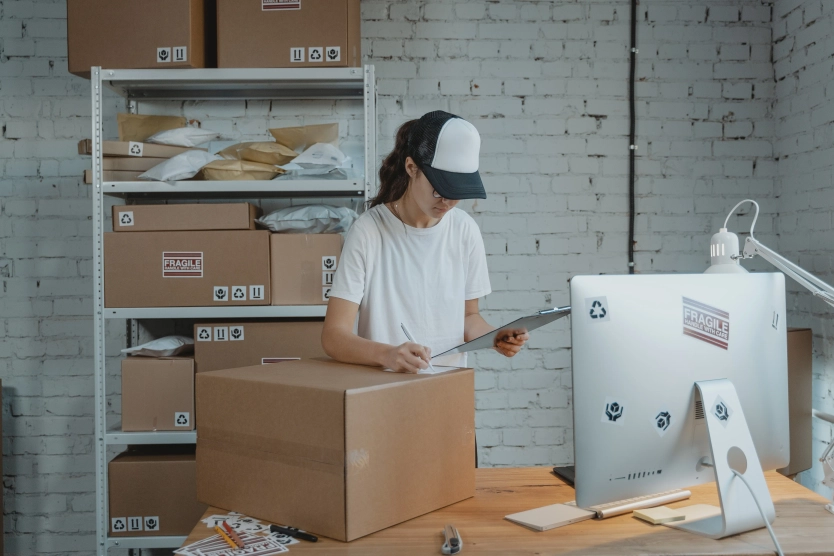
Essential Steps for Packing Boxed Packaged Goods for Safe Transport
Protecting Your Electronics During Boxed Packaged Goods Transport
Boxed Packaged Goods: Exploring the Latest Trends, Packaging Types, and Materials
Tips for Safely Packaging Fragile Items for Boxed Packaged Goods Transport

Boxed Packaged Goods refer to products that are enclosed within a box for protection and transportation purposes. These goods are commonly used for fragile or valuable items, such as electronics, computers, toys, and games. Box packaging provides a secure and reliable way to ship products, ensuring their safety during transit.
Definition: Boxed Packaged Goods are products that are packaged and enclosed within a box.
Alternative Names: Boxed Packaged Goods are also known as Packaged Goods or Boxed Goods.
Purpose: Box packaging is commonly used for fragile or high-value items that require additional protection during shipping.
Examples: Electronics, computers, toys, and games are often packaged in boxes to ensure their safety during transportation.
Protection during Shipping: Boxed packaged goods offer a higher level of protection to the enclosed items, minimizing the risk of damage.
Ideal for Online Stores: If you run an online store, using boxes as product containers is essential for secure and safe delivery to your customers.
When purchasing a new computer, it is typically packaged in a box to protect it from any potential damage during transit.
Toy manufacturers often use box packaging to safeguard delicate toys and prevent them from getting damaged during shipping.
Online retailers utilize box packaging to ensure the safe delivery of fragile items like glassware or ceramics to their customers.
Boxed packaged goods play a crucial role in the shipping and delivery process, providing enhanced protection for valuable and delicate items. By utilizing box packaging, businesses can maintain customer satisfaction by ensuring that products arrive safely at their destination.
To maintain a good reputation and customer confidence, businesses must transport boxed packaged goods safely and securely. The G7 Smart Logistics App offers comprehensive services, including advanced packaging, real-time tracking, and a network of reliable carriers, to ensure the secure delivery of products. Contact us today to discover how the G7 Smart Logistics App can benefit your business.
Advanced Packaging: The G7 Smart Logistics App provides businesses with advanced packaging solutions designed to protect products during transportation. Options include bubble wrap, foam inserts, and personalized boxes tailored to specific products, preventing damage during shipment.
Real-Time Tracking: Verified partners of the app offer tracking options for shipments and products. Businesses can monitor their shipments and receive notifications upon delivery. This enhances transparency, visibility, and customer satisfaction.
Network of Carriers: The G7 Smart Logistics App has partnered with a reliable network of carriers known for their professionalism, reliability, and security. Businesses can choose the carrier that best suits their needs, ensuring the safe and secure transportation of boxed packaged goods.
In today’s competitive e-commerce landscape, businesses must prioritize the safe and secure transport of boxed packaged goods. With the G7 Smart Logistics App’s comprehensive services, businesses can confidently deliver their products, maintain their reputation, and meet customer expectations. Contact us now to explore the benefits of the G7 Smart Logistics App for your business.
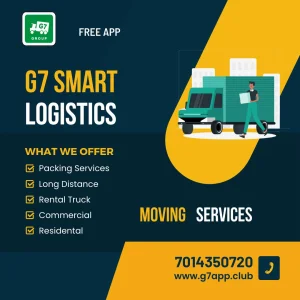
Packaging boxes play a crucial role in product satisfaction and safety. They offer various benefits, including protecting the product, ensuring easy transportation, and providing cost-effective customization. This article explores why packaging boxes are necessary for products and how they contribute to a positive consumer experience.
Product Safety: Packaging boxes are essential for ensuring the safety of products during transportation and storage. They protect the items from damage, moisture, and external factors, ensuring they reach customers in optimal condition.
Secure Migration: Proper packaging methods help products migrate from one location to another without any harm. Sturdy and well-designed boxes prevent breakage or deformation, maintaining the integrity of the product.
Easy Transportation: Packaging boxes are designed for convenience and ease of transportation. They are lightweight, stackable, and can be easily handled by carriers, ensuring smooth logistics and reducing the risk of mishaps.
Cost-Effectiveness: Packaging boxes provide a cost-effective solution for product packaging. They can be customized to fit the specific dimensions and requirements of the product, reducing excess material usage and minimizing packaging costs.
Packaging boxes offer practicality, protection, and customization options for products, ensuring a positive customer experience and minimizing the risk of damage or dissatisfaction. By investing in quality packaging boxes, businesses can enhance their brand reputation and customer satisfaction.
Choosing the right box for boxed packaged goods transport is essential to ensure the safe delivery of your products. This article highlights the common types of boxes used in packaged goods transport and provides tips for protecting your products during transportation.
Corrugated Boxes: These sturdy boxes are commonly used for packaged goods transport. They are made of layered paperboard with a corrugated medium, providing strength and durability. Tip: Select the appropriate box size and use cushioning materials to prevent shifting and damage.
Folding Cartons: These lightweight boxes are ideal for retail packaging. They can be customized with logos or specific designs. Tip: Use folding cartons for light products, ensuring proper cushioning to protect against damage.
Rigid Boxes: These high-end boxes offer superior protection for valuable products. They are made of thick paperboard, chipboard, or plastic and can be customized. Tip: Choose rigid boxes for fragile, high-value items and opt for secure closures.
Bulk Bins: Reusable and made of heavy-duty plastic or wood, bulk bins are suitable for packaging large quantities of products like fruits and vegetables. Tip: Utilize bulk bins for large, heavy items, securing them with straps or containment measures.
In summary, selecting the right box for boxed packaged goods transport is crucial. Corrugated boxes are commonly used and offer good protection for most products. However, folding cartons, rigid boxes, and bulk bins may be more suitable depending on the product type. Remember to use cushioning materials and secure closures to prevent damage during transportation.
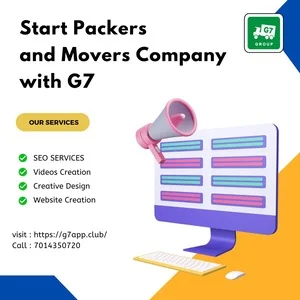
Corrugated boxes offer numerous benefits for packaging various items. Their strength, versatility, cushioning capabilities, and eco-friendly nature make them a popular choice in the market. This article highlights the advantages of using corrugated boxes and discusses their limitations.
Strength and Durability: Corrugated boxes are known for their robustness, making them suitable for packing and shipping items securely. They can withstand the rigors of transportation, protecting the contents throughout the journey.
Versatility: Corrugated boxes are highly flexible and can be used for packaging a wide range of products. They come in various sizes and can be customized to meet specific requirements, offering versatility for different industries.
Cushioning and Protection: The design of corrugated boxes provides cushioning to protect the contents from impact or damage during handling and transportation. This is particularly beneficial for fragile or delicate items.
Custom Printing: Corrugated boxes can be printed with logos, branding, and other designs, serving as a promotional and marketing tool. Customized packaging enhances brand visibility and recognition.
Sustainability: Corrugated boxes are made from renewable resources, such as paper, and are fully recyclable. They contribute to eco-friendly packaging solutions, reducing environmental impact compared to non-recyclable alternatives.
Corrugated boxes offer a combination of strength, versatility, cushioning, and eco-friendliness, making them an ideal choice for packaging a wide range of products. By considering their limitations and using them appropriately, businesses can benefit from their protective and sustainable features.

The design of packaging plays a crucial role in influencing consumers’ purchasing decisions. To increase sales and create a unique brand image, here are six tips for designing packaging for boxed packaged goods. These tips include understanding your target audience, creating a unique and visually appealing design, providing a memorable unboxing experience, incorporating environmentally friendly elements, seeking inspiration from various sources, and ensuring your packaging suppliers understand your specific shipping needs.
Know Your Target Audience: Understand the preferences, motivations, and buying habits of your target audience to create packaging that resonates with them.
Make Your Boxed Packaged Goods Look Unique: Use creative printing techniques, textures, or typography to make your packaging stand out without the need for expensive materials.
Create a Surprising Unboxing Experience: Engage customers emotionally by designing an enjoyable and memorable unboxing experience, similar to the excitement of unboxing Apple products.
Use Environmentally Friendly Design: Incorporate recycled or reusable materials to enhance your brand image and attract eco-conscious customers.
Find Box Design Ideas: Seek inspiration from online platforms like Pinterest and Canva, as well as your existing customers and colleagues who may offer valuable insights.
Ensure Packaging Suppliers Understand Your Needs: Collaborate with custom box manufacturers who understand your products and can suggest suitable packaging materials that protect your goods during shipping.
A company selling artisanal chocolates designs packaging with elegant typography and embossed patterns to convey a premium and unique brand identity.
An eco-friendly cosmetics brand uses recycled cardboard boxes and biodegradable packaging materials to align with their commitment to sustainability.
A subscription box service creates a delightful unboxing experience by including surprise gifts, personalized messages, and engaging packaging elements like ribbons or stickers.
By following these packaging design tips, businesses can enhance their product’s appeal, increase sales, and leave a lasting impression on customers. Good packaging design not only protects the product but also enhances the overall brand experience.
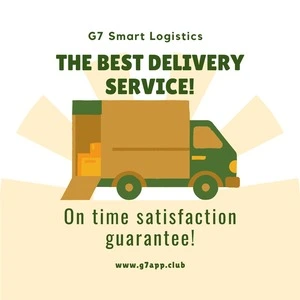
Properly packing boxed packaged goods is crucial to ensure their safe transportation. By following these essential steps, you can protect your products and ensure they reach their destination in excellent condition. From choosing the right box to selecting a reliable carrier, these steps will help you pack with confidence.
Choose the Right Box: Select a box suitable for the size, weight, and fragility of your product. Consider options like corrugated boxes, folding cartons, rigid boxes, or bulk bins based on your specific needs.
Use Proper Cushioning: Protect your products by using appropriate cushioning materials like bubble wrap, foam peanuts, or air pillows. Fill empty spaces in the box to prevent shifting during transport.
Wrap Each Item Individually: Wrap each item separately using cushioning materials to safeguard them from scratches and damage during transit.
Secure the Box: Use strong packing tape to seal the box securely. Reinforce the seams and corners for added strength and stability.
Label the Box: Clearly label the box with the product name, quantity, and relevant information. This ensures proper handling throughout the transport process.
Consider Climate Control: If shipping temperature or humidity-sensitive products, use insulated packaging or opt for climate-controlled transport to protect them during transit.
Choose a Reliable Carrier: Select a reputable carrier through G7 Smart Logistics that has a proven track record of reliability, security, and professionalism. Look for carriers that offer tracking services for better monitoring of your shipment.
In summary, packing boxed packaged goods for transport requires careful attention to detail. Follow these essential steps, from selecting the right box to choosing a reliable carrier, to ensure the safe and secure delivery of your products. With proper packing techniques, you can have peace of mind knowing your goods will arrive at their destination intact.
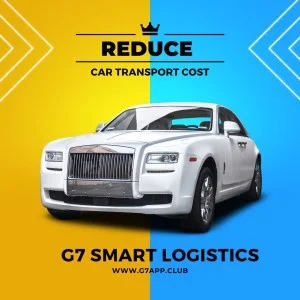
Transporting electronics, boxed packaged goods can be a safe and secure option for shipping. However, it is important to choose the right box and take extra precautions to protect delicate electronics during transport. Here are some tips for packaging electronics for boxed packaged goods transport:
Choose the Right Box: Choose a right size box for your electronics which is made of sturdy materials like corrugated cardboard. Double check and Make sure the box is clean and free of any debris.
Use Antistatic Packaging Materials: Electronics are sensitive to static electricity, which can damage internal components. Use antistatic packaging materials like foam, bubble wrap, or packaging peanuts to protect electronics from electrostatic discharge (ESD).
Secure the Electronics: Make sure that the electronics are securely fastened within the box by using Use foam padding, crumpled paper, or other cushioning materials to hold the electronics in place. These will protect to move around during transport.
Seal the Box: Use strong tape and packaging material to seal the box securely. Double check and Make sure to reinforce the seams and corners of the box with additional tape.
Label the Box: To ensure that the box is handled properly during transport clearly label the box with the product name, quantity, and any other relevant information.
Consider Climate Control: Electronics can be sensitive to temperature and humidity fluctuations. If you are shipping electronics over long distances or to areas with extreme climates, consider using insulated packaging or climate-controlled transport to protect them during transit.
Boxed packaged goods can be a safe and secure option for transporting electronics. When packaging electronics for transport, make sure to choose the right box, use antistatic packaging materials, and secure the electronics within the box. Label the box clearly and consider climate control if necessary. With these precautions in place, you can ensure that your electronics arrive at their destination safely and securely.

Boxed packaged goods are products that are pre-packaged and sold in a box. While boxed packaged goods have some advantages with some drawbacks. Some pros and cons of boxed packaged goods are:
Convenience: Boxed packaged goods are convenient for all retailers, users and consumers. They are easy to store, transport, and display in retail stores, and they offer consumers a quick and easy way to purchase products.
Protection: Boxed packaged goods provide protection for the products inside, and keep your products safe from damage during transportation.
Branding: Boxed packaged goods is an opportunity to promote brand and differentiate your products from competitors. Companies Boxed packaged goods for branding and marketing.
Cost-effective: Boxed packaged goods are often less expensive to produce than other types of packaging, such as custom packaging or specialty packaging.
Environmental Impact: Boxed packaged goods contribute to environmental waste. The boxes and packaging materials used are often not recyclable or biodegradable, leading to increased waste in landfills.
Limited Customization: Boxed packaged goods offer limited customization options compared to other types of packaging. Companies may not be able to create unique packaging designs that differentiate their products from competitors.
Size Limitations: Boxed packaged goods are limited in size, which may make them unsuitable for certain products. Large or irregularly shaped products may require custom packaging or specialty packaging.
Inefficient Use of Space: Boxed packaged goods often come in a standard size, which may result in inefficient use of space during transportation and storage.
In conclusion, boxed packaged goods have both advantages and disadvantages. While they offer convenience, protection, and branding opportunities, they also contribute to environmental waste and have limitations in customization and size. Companies should consider these factors when deciding whether to use boxed packaged goods for their products.

Boxed packaged goods have been a popular choice for manufacturers and retailers for years, thanks to their convenience, cost-effectiveness, and ease of transport. However, as consumer preferences and technology continue to evolve, so too do the trends, packaging types, and materials used in boxed packaged goods. In this article, we’ll explore the latest developments in the world of boxed packaged goods.
Eco-Friendly Packaging: As consumers become more conscious of their environmental impact, there is a growing trend towards eco-friendly boxed packaged goods. Manufacturers are using recycled and biodegradable materials, such as paperboard, bamboo, and plant-based plastics, to reduce waste and minimize the use of non-renewable resources.
Minimalist Packaging: Minimalist packaging is becoming increasingly popular among consumers who value simplicity and sustainability. This trend involves using simple, uncluttered designs and minimal packaging materials to reduce waste and create a cleaner, more streamlined look.
Smart Packaging: Advances in technology have led to the development of “smart” boxed packaged goods, which use sensors and other technologies to monitor product quality, track shipments, and communicate with consumers.
Folding Cartons: Folding cartons are a popular type of boxed packaged goods used for a wide range of products, including food, cosmetics, and pharmaceuticals. They are made from paperboard and can be customized with various coatings, laminations, and printing techniques.
Corrugated Boxes: Corrugated boxes are sturdy, durable boxes made from corrugated cardboard. They are commonly used for shipping and storing large, heavy products, such as appliances and electronics.
Rigid Boxes: Rigid boxes are high-end boxed packaged goods used for luxury products, such as perfumes and high-end cosmetics. They are made from thick, durable materials like paperboard, chipboard, or plastic, and can be customized with various coatings, embossing, and other decorative features.
Paperboard: Paperboard is a versatile material commonly used in boxed packaged goods. It is lightweight, easy to print on, and can be recycled.
Plastic: Plastic is a popular material for boxed packaged goods due to its durability and flexibility. However, concerns over plastic waste and pollution have led to a growing trend towards eco-friendly plastics made from plant-based materials.
Metal: Metal is a durable material used for boxed packaged goods such as canned foods and beverages. However, it is heavy and expensive to produce, making it less common than other materials.
In conclusion, boxed packaged goods continue to evolve to meet the changing needs and preferences of consumers. Trends towards eco-friendly, minimalist, and smart packaging are gaining popularity, while traditional materials like paperboard, plastic, and metal continue to be used in various forms. As technology continues to advance, we can expect to see even more innovative developments in the world of boxed packaged goods.
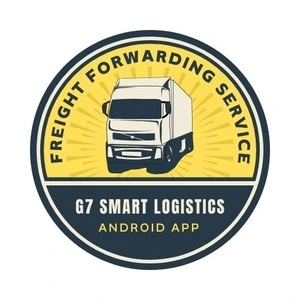
When packaging fragile items for boxed packaged goods transport, it’s important to take extra care to ensure that the items are well-protected and won’t be damaged during shipping. Here are some tips to help you package fragile items for transport:
Use appropriate cushioning materials: Use bubble wrap, foam padding, or other cushioning materials to protect fragile items from damage during shipping. Make sure that the cushioning material is thick enough to absorb any shock or impact that may occur during transit.
Use sturdy boxes: Choose a sturdy box that is strong enough to support the weight of the items being shipped. Use boxes that are specifically designed for fragile items or for your specific product, if available.
Label boxes clearly: Label boxes containing fragile items clearly, and include handling instructions such as “Fragile” or “Handle with Care”. This will alert shipping personnel to take extra precautions when handling the box.
Avoid stacking heavy boxes on top of fragile items: Avoid stacking heavy boxes on top of boxes containing fragile items, as this can cause damage during transport.
Use appropriate sealing materials: Use appropriate packing tape or straps to secure each box. If you’re concerned about tampering or theft, consider using tamper-evident seals.
Consider using a logistics app: Using a logistics app like G7 Smart Logistics App can help you track your shipment and detect any potential issues or delays. This can give you peace of mind that your fragile items are being handled with care during transport.
Bagged packaged goods and boxed packaged goods are two common packaging types for products. Here are some differences between the two:
Packaging Material:
Product Quantity:
Product Variety:
Storage:
Cost:
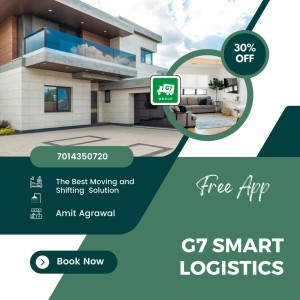
Logistics apps have transformed boxed packaged goods transport, providing innovative features to streamline the transportation process. G7 Moving App is a leading logistics app that offers convenient solutions for businesses and individuals.
Real-time Booking Notification Alerts: Stay updated on shipment progress in real-time. Example: Receive instant alerts when your package is picked up, in transit, or delivered.
Direct Communication with Drivers: Communicate directly with drivers for better visibility and control. Example: Coordinate delivery instructions or address changes directly with the driver.
Multiple Vehicle Options: Choose from various vehicle types to meet specific requirements. Example: Select a bike for small deliveries or a truck for larger shipments.
User-Friendly Interfaces: Easily manage deliveries and track shipments with user-friendly interfaces. Example: Navigate through the app effortlessly to schedule pickups and monitor deliveries.
24/7 Customer Support: Access round-the-clock support for assistance and queries. Example: Get help with any issues or concerns regarding your delivery, anytime.
Multiple Payment Options: Enjoy flexibility with various payment methods. Example: Pay for deliveries using credit cards, debit cards, or net banking.
Automated Delivery Updates: Receive automated updates on delivery progress. Example: Get notified when your package reaches certain milestones or faces any delays.
These features enhance the efficiency and convenience of logistics apps, empowering businesses and individuals to effectively manage their transportation needs. With the G7 Moving App and other top logistics apps, you can optimize your supply chain or find a reliable transportation solution tailored to your requirements.
G7 Packers and Movers, available on the G7 Moving App, offers seamless booking and real-time shipment tracking. They provide packing, unpacking, loading, unloading, transportation, and storage services.
Website: [https://g7app.club/] App download link for Android: G7 Smart Logistics YouTube link: G7 YouTube Channel Link
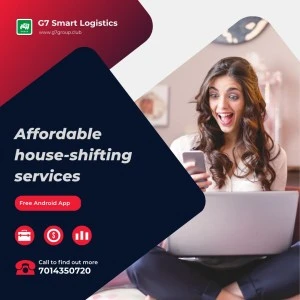
The G7 Smart Logistics app is a cost-effective solution for businesses and individuals seeking to reduce boxed packaged goods logistics costs in India. With innovative features and a user-friendly interface, this logistics app streamlines transportation and moving processes while saving you money.
Cost Savings: The G7 Smart Logistics app utilizes technology and innovative solutions to increase efficiency and reduce the need for manual labor, resulting in significant cost savings.
Real-time Tracking: Monitor the progress of your deliveries in real-time, minimizing the risk of delays and ensuring timely shipments.
User-friendly Interface: Easily manage your deliveries through the app’s intuitive interface, reducing the need for additional support and further cutting costs.
Multiple Payment Options: Enjoy the convenience of multiple payment methods, including credit cards, debit cards, and net banking, simplifying the payment process and reducing errors.
24/7 Customer Support: Swiftly resolve any issues with the app’s round-the-clock customer support, minimizing delays and lowering transportation and moving costs.
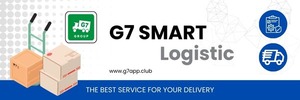
No Brokers or Commissions: G7 Moving App ensures a direct connection between users and partners, eliminating the need for intermediaries and reducing costs.
Unique Luxury Transfer: Experience a unique luxury transfer service that caters to your high-end transportation needs.
Expert Packers and Movers: Benefit from a dedicated team of experienced packers and movers who handle long-distance moving and various transportation requirements.
Single App for Users and Partners: Seamlessly switch between user and partner roles with a single click, streamlining the logistics process.
For more information about G7 Moving App and its services, please visit our website or download the app from Google Play. Experience cost-effective boxed packaged goods logistics solutions and start saving today!
Website: G7 Website App download link for Android: G7 App Download Link
#BoxedPackagedGoods #Transportation #Logistics #SecureTransport #Shipping #Packaging #FragileItems #G7SmartLogistics #EfficientTransportation #SafeTransportation #PackagingMaterials #PackagingTips #PackagingTypes #LogisticsApps #RealTimeTracking #CustomerSupport
1 Bagged Packaged Goods, 2. Gadi with Gadi Wala, 3. Boxed Packaged Goods, 4. Online Jobs for Students, 5. Local Transport, 6. MP Transport and Transport Nagar Moving Quotes, 7. Freight Transportation Logistics, 8. Second Hand Trucks, 9. Moving Services, 10. Warehousing, 11. Cargo For Shipping, 12. Professional Packers and Movers in Bangalore, 13.Packers and Movers in Chennai, 14. Transporters in Delhi, 15.G7 House Shifting App, 16. Smooth and Stress-Free Relocation, 17. Join the Biggest Packers and Movers Group, 18. Truck Booking App in India, 19. Top Logistics Apps in India, 20. Join Transporters Group in India, 21. Top Transport Apps in India, 22. Car Transport in India, 23. Save Transport and Moving Costs, 24. Affordable Truck Booking Apps, 25. Starting a Packers and Movers Company, 26. Affordable House-Shifting Services in India, 27. Best-Rated Packers and Movers in India, 28. Packers and Movers App for Office Relocation, 29. Transport Bike from One City to Another, 30. Commercial Truck Booking App for Logistics Companies, 31. Packers and movers for long distance moving, 32. Top Truck Rental Apps for Local and Outstation Deliveries

Head Office:
D-301, 209, 2nd Floor, Parasmani Complex,
Nada Khada Chowk, Bapu Bazar,
Udaipur (Raj.) - 313001
Time: 10.00 AM - 6.00 PM
Days: Monday - Saturday
Mobile: +91 7014350720
WhatsApp: +91 7014350720
khitsinstitute@gmail.com
khitsinstitute@gmail.com
